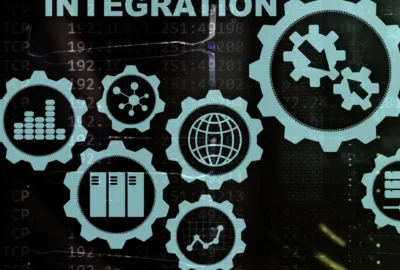Have you ever wished there was a magic button to automate all those repetitive tasks at work? Well, UiPath might be the closest thing to that. UiPath is a leading player in the world of Robotic Process Automation (RPA), a technology that’s changing the game for businesses everywhere. By automating routine tasks, UiPath helps companies save time, cut costs, and improve accuracy. This blog post will dive deep into what UiPath is, how it works, and how it can transform your business. Stick around to learn everything you need to know about UiPath and RPA!
What is UiPath?
UiPath is a powerful automation platform that lets businesses create, deploy, and manage automated processes. Think of it as a digital assistant that handles mundane tasks, freeing up your team to focus on more strategic work. Founded in 2005, UiPath has grown rapidly and is now one of the most popular RPA tools on the market.
A Brief History of UiPath
UiPath started as a small tech company in Romania. Over the years, it evolved into a global leader in automation software. The company’s growth has been driven by its commitment to innovation and user-friendly design. Today, UiPath is known for its robust platform that combines RPA with artificial intelligence (AI) and machine learning (ML) capabilities.
Core Purpose and Key Functionalities
At its core, UiPath aims to make automation accessible to everyone. Whether you’re a seasoned developer or a business user with no coding experience, UiPath offers tools that cater to your needs. Key functionalities include:
- Visual Workflow Designer: UiPath Studio provides a drag-and-drop interface for creating automation workflows.
- Robust Execution: UiPath Robots execute tasks with precision and speed.
- Centralized Management: UiPath Orchestrator allows you to manage all your automation processes from a single dashboard.
Comparison with Other RPA Tools
UiPath stands out from the competition due to its ease of use, comprehensive feature set, and strong community support. While other RPA tools like Blue Prism and Automation Anywhere also offer robust capabilities, UiPath’s intuitive interface and extensive integrations make it a favorite among users.
Improve your Internal Processes.
Understanding Robotic Process Automation (RPA)
Before diving deeper into UiPath, let’s take a moment to understand what RPA is all about. RPA involves using software robots to automate repetitive, rule-based tasks. These robots can mimic human actions, such as clicking buttons, entering data, and processing transactions.
Benefits of RPA
Implementing RPA brings numerous benefits to organizations:
- Cost Savings: Automation reduces the need for manual labor, leading to significant cost reductions.
- Improved Accuracy: Robots perform tasks with high precision, minimizing errors.
- Enhanced Scalability: RPA solutions can be easily scaled up or down based on business needs.
RPA Applications
RPA has proven effective across various industries:
- Finance: Automating invoice processing, financial reporting, and compliance checks.
- Healthcare: Streamlining patient data management, appointment scheduling, and billing.
- Manufacturing: Optimizing supply chain operations, inventory management, and quality control.
How Does UiPath Work? A Deep Dive into Its Architecture and Components
UiPath’s architecture is designed to provide a seamless automation experience. It comprises three main components: UiPath Studio, UiPath Robot, and UiPath Orchestrator. Let’s explore each of these in detail.
1. UiPath Studio – Designing Automation Workflows with Ease
UiPath Studio is the visual designer where you create automation workflows. Its drag-and-drop interface makes it easy to build complex processes without writing code.
- Visual Designer: The heart of UiPath Studio is its visual designer. You can drag and drop activities to create workflows, making automation accessible to non-developers.
- Advanced Features: UiPath Studio offers advanced features like data scraping, exception handling, and integration with external applications. These capabilities allow you to create robust and reliable automation solutions.
Step-by-Step Guide to Using UiPath Studio:
- Start a New Project: Open UiPath Studio and start a new project.
- Design Your Workflow: Use the drag-and-drop interface to design your workflow. Add activities like ‘Click’, ‘Type Into’, and ‘Read Range’ to build your automation process.
- Configure Activities: Configure each activity by setting properties such as input values and output variables.
- Run and Test: Run your workflow to test its functionality. Use debugging tools to identify and fix any issues.
- Deploy: Once your workflow is ready, deploy it to a UiPath Robot for execution.
2. UiPath Robot – Executing Automation Tasks Seamlessly
UiPath Robots are the execution components that carry out the tasks defined in your workflows. These robots can operate in two modes: attended and unattended.
- Attended Robots: These robots work alongside humans, assisting them with tasks. For example, an attended robot might help a customer service agent by retrieving customer information during a call.
- Unattended Robots: These robots operate independently, performing tasks without human intervention. Unattended robots are ideal for back-office processes like data entry and report generation.
Example Use Cases:
- Attended Robot: A sales representative uses an attended robot to automatically fill out order forms based on customer input.
- Unattended Robot: An unattended robot processes invoices overnight, ensuring all transactions are recorded by morning.
3. UiPath Orchestrator – Managing Automation at Scale with Centralized Control
UiPath Orchestrator is the web-based application that allows you to manage and monitor your automation processes. It provides a centralized platform for deploying, scheduling, and tracking robots.
- Robot Management: Orchestrator lets you manage a fleet of robots, assigning tasks and monitoring their performance.
- Scheduling: You can set up schedules to run automation processes at specific times or intervals.
- Performance Monitoring: Orchestrator provides real-time metrics on robot performance, helping you identify and address issues quickly.
- Handling Exceptions: Orchestrator helps you handle exceptions and errors efficiently, ensuring your automation processes run smoothly.
- Compliance: Orchestrator ensures that your automation processes comply with regulatory requirements by providing audit logs and detailed reports.
Deployment Options: Choosing What Suits Your Organization Best
When it comes to deploying UiPath, organizations have several options to choose from. The two primary deployment models are cloud-based and on-premises.
Cloud-Based Solutions
Cloud-based deployments offer flexibility and scalability. With UiPath’s cloud solutions, you can quickly set up and scale your automation processes without worrying about infrastructure management.
- Pros:
- Cost-Effective: Lower upfront costs and pay-as-you-go pricing models.
- Scalable: Easily scale your automation processes based on demand.
- Accessibility: Access your automation environment from anywhere with an internet connection.
- Cons:
- Security Concerns: Sensitive data may be at risk in a shared cloud environment.
- Dependency on Internet: Requires a reliable internet connection for optimal performance.
On-Premises Deployment
On-premises deployments provide more control and security. Your automation environment is hosted within your organization’s infrastructure.
- Pros:
- Enhanced Security: Data remains within your organization’s network.
- Customization: Greater control over the environment and customization options.
- Cons:
- Higher Costs: Requires significant upfront investment in hardware and software.
- Maintenance: Ongoing maintenance and management of the infrastructure are needed.
Real-World Applications: How Leading Organizations Have Leveraged the Power of UiPath to Drive Business Transformation
To understand the impact of UiPath, let’s look at some real-world case studies where organizations have successfully implemented UiPath to transform their operations.
Case Study 1: AIRBUS – Streamlining Operations Through Automation
Airbus, a global leader in aerospace manufacturing, implemented UiPath to streamline its operations. By automating repetitive tasks such as data entry and document processing, Airbus significantly reduced processing times and improved accuracy. The automation solutions also enabled Airbus to handle increased workloads without additional staffing.
Case Study 2: NASA – Improving Mission Efficiency with Robotic Process Automation
NASA utilized UiPath to improve mission efficiency by automating various administrative tasks. From processing employee expenses to managing procurement processes, UiPath robots helped NASA reduce manual effort and enhance operational efficiency. This allowed NASA to focus more on its core mission objectives.
Case Study 3: DHL – Enhancing Logistics Management Through Automated Workflows
DHL, a leading logistics company, leveraged UiPath to optimize its logistics management. By automating tasks like shipment tracking, invoice processing, and customer communication, DHL improved its service delivery and customer satisfaction. The automation solutions also enabled DHL to scale its operations efficiently.
Benefits Beyond Cost Savings: Exploring The Strategic Value Proposition Offered By Implementing UiPath Solutions In Organizations Today
While cost savings are a significant benefit of implementing UiPath, the strategic value proposition goes beyond just financial gains. Embracing UiPath can drive innovation and unlock new growth opportunities.
- Innovation: Automation frees up your team to focus on innovative projects that drive business growth.
- Customer Experience: By automating routine tasks, you can provide faster and more accurate services to your customers.
- Employee Satisfaction: Reducing mundane tasks enhances employee satisfaction and productivity.
- Competitive Advantage: Organizations that leverage automation can respond quickly to market changes, gaining a competitive edge.
Future Trends In Robotic Process Automation With A Focus On UiPath As An Enabler For Digital Resilience And Agility In The Face Of Disruption
As technology evolves, RPA is set to become even more powerful. Here are some future trends to watch out for:
- AI and ML Integration: Combining RPA with AI and ML will enable more intelligent automation solutions. For example, AI-powered robots can handle complex tasks like data analysis and decision-making, further extending the capabilities of traditional RPA.
- Intelligent Document Processing: Advanced document understanding capabilities will allow robots to process unstructured data, such as handwritten forms or scanned documents, with greater accuracy.
- Hyperautomation: This trend involves the use of multiple automation technologies, including RPA, AI, ML, and process mining, to create a highly automated business environment. UiPath is at the forefront of this movement, providing a comprehensive suite of tools to support hyperautomation.
- Enhanced User Experience: Future developments will focus on making automation even more accessible to non-technical users. Expect more intuitive interfaces and user-friendly features that simplify the creation and management of automation workflows.
- Increased Focus on Security: As automation becomes more prevalent, ensuring the security of automated processes will be crucial. It will continue to enhance its security features to protect sensitive data and comply with regulatory requirements.
Conclusion: Embracing The Future Of Work With Confidence Through Intelligent Process Automation
UiPath is not just a tool; it’s a catalyst for digital transformation. By embracing it, businesses can streamline their operations, reduce costs, and foster innovation. As automation technology continues to evolve, this tool remains committed to providing cutting-edge solutions that empower organizations to navigate the complexities of the modern business landscape with confidence.
Whether you’re just starting your automation journey or looking to scale your existing processes, UiPath offers the tools and support you need to succeed. So why wait? Dive into the world of RPA and discover how intelligent process automation can revolutionize your business.




1 Comment
Comments are closed.